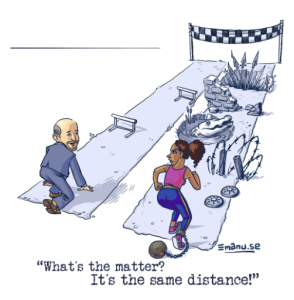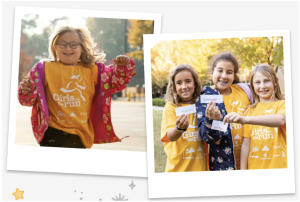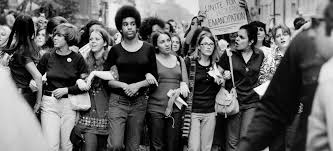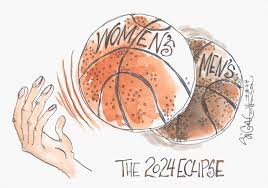1
Section One: The Fundamentals
A) What do we know about sport? What are common assumptions we make about sport and society?
| Participation in sports, particularly for youth, is often seen as a powerful means of character development. It provides opportunities to learn important life skills such as discipline, hard work, teamwork, and resilience. These experiences can help shape young athletes into dedicated, cooperative and determined individuals.
While this idea is a main purpose of youth sports, it doesn’t always work out that way. Aspects including favouritism, politics, or “who you know” can influence factors such as playing time and success, undermining the values of effort. Instead of promoting positive character traits, these issues can lead to negative thought patterns and behaviours. Ultimately, while sports have the potential to build character, achieving this outcome depends on the environment, leadership and culture. One thing that surprised me was that some of my peers were arguing that sports do not build character at all. While, as I described above, sports do not always build character in the way intended for everyone, I think that it is impossible to say that sports never build character, based on my own experience as well as my experiences working with youth athletes. |
Exercise 3: Notebook prompt
What are some other metanarratives about sport that you are familiar with? Find an image or video clip or draw something yourself that captures this idea…
So what? Why does any of this matter? Does it matter? As something we grow up with – live with – play through – we don’t often interrogate the meanings of sport, and perhaps we don’t want to.
But being aware of these assumptions and metanarratives is especially important, I would argue, because of the centrality of sport to our everyday lives, the role that sport plays in shaping our childhood and worldviews and….. [finish that thought]

One metanarrative about sport that I am familiar with is the belief that professional athletes are the “best of the best”. This often stems from the assumption that those who rise to the top worked the hardest, were the most dedicated, and possessed the most talent. While this concept shapes how we view elite athletes, it also overlooks the systemic inequalities that limit opportunities for many. This is a concept about sport that widely shapes our views on professional athletes. This perspective assumes that everyone has equal access to training, resources, and opportunities to succeed. In reality, countless athletes may have the talent and work ethic to excel but lack the resources to attend university, participate in major tournaments, get scouted, or join representative teams. Being aware of this fact is important. It may inspire scouts to go look for talent outside of typical locations, or inspire organizations to sponsor more athletes they may have previously overlooked. It also inspires coaches to look at athletes for the whole person they are and their story, and how that may be impacting their ability to fulfil their potential. The role that sport plays in shaping out childhood and worldviews in teaching values such as hard work, teamwork, and perseverance, is very important. Unfortunately, it can also create myths about meritocracy and fairness. |
B) What is social justice?
Exercise 4: Padlet Prompt
Think back to the last section and try to look at some of the ideas we discussed differently. How might sport and social justice actually co-exist?
Record any images, video clips, or gifs you added to the padlet and identify a point of intersection between sport and social justice (can be an issue or a barrier or a debate or something you would like to explore in more depth in this course) . Screenshot or paste in your response below.

Sport and social justice aspects of education and empowerment undeniably coexist. Many sports programs naturally combine these elements, as sports provide youth with opportunities to learn teamwork, resilience, and strength. Specific programs intentionally use sports as a means to educate and empower athletes. For example, as pictured above, Girls on the Run is a program designed to teach essential life skills such as confidence, conflict resolution, and resilience, through a running program. By empowering girls to navigate societal pressures and stereotypes, this program demonstrates how sports can serve as a means for education and empowerment. Through programs like these, we can clearly see the intersection of sport and social justice, showing how sport can go beyond the competition, to teach and inspire. |
C) Social Justice Reading
(note: this activity is optional!)
D) KINESIOLOGY AND SOCIAL JUSTICE
Exercise 5:
Exercise 6:
What are the implications of bodies-at-risk discourse and the refusal to understand the health gap from a social justice perspective, according to the authors of this article?
| There are various implications of bodies-at-risk discourse and the refusal to understand the health gap from a social justice perspective, according to the authors of this article. The first is that marginalized groups are labeled as “problem”populations. Along with this, they are often labeled as being lazy and lacking self-management, self-discipline, and self-compliance, without addressing systemic barriers, such as poverty, discrimination, or limited access to resources.This further enforces the concept of “othering”, as people look at minority groups as less than, and different from the majority. This goes to further validate the master narrative that white culture is the norm, and that minorities have negative qualities. The authors suggest that in order to counteract this idea of the bodies-at-risk discourse, we should use intersectional frameworks, such as Critical Race Theory, to understand how overlapping systems of oppression influence health disparities. |
Section Two: Sport Feminism
Exercise 7: Notebook Prompt
What is feminism? What does it mean to you? Choose one of the images below and explain how it captures your understanding of feminism (or find one that does speak to you and paste this into your pressbook with an explanation of why it matters to you.

Feminism is the belief that men and women should have equal rights and opportunities. It is a movement to end sexism and oppression, and to fight for equality. To me, feminism is advocating for a world in which everyone has equal opportunities, and their gender, race, disabilities, class, and any other possible labels, is not a factor in obtaining these opportunities. I chose the image above because it represents people of diverse races and backgrounds coming together to support equality. It conveys a sense of mutual support and collective commitment to creating opportunities for everyone, highlighting the power of unity in striving for a more inclusive and equitable world. |
Exercise 8: Notes Prompt (optional)
NB: Cornell notes is a great resource that teaches effective notetaking. Unfortunately, our system can’t save notes taken in the H5P app, so this is fully optional.
Exercise 9: Crossword Activity
Exercise 10: Padlet Prompt
 |

| I do feel that the landscape is changing, and that people are beginning to care about women’s sports. As an individual who works in a sport focused job position, I directly get to see the various trends of sports. The options for women’s sports are continuous growing, and recently at a more rapid rate than ever. Along with the growth in the recognition of female basketball players, we are now also seeings leagues such as the PWHL become popular. More sports and clubs are being offered for women, such as in “traditionally male dominated sports” such as football and rugby. This is also evident by Ilona Maher becoming the largest followed rugby player (male or female) on Instagram. Overall, I am noticing a shift and I feel like the landscape is changing. It is an exciting time for women’s sport!
|

